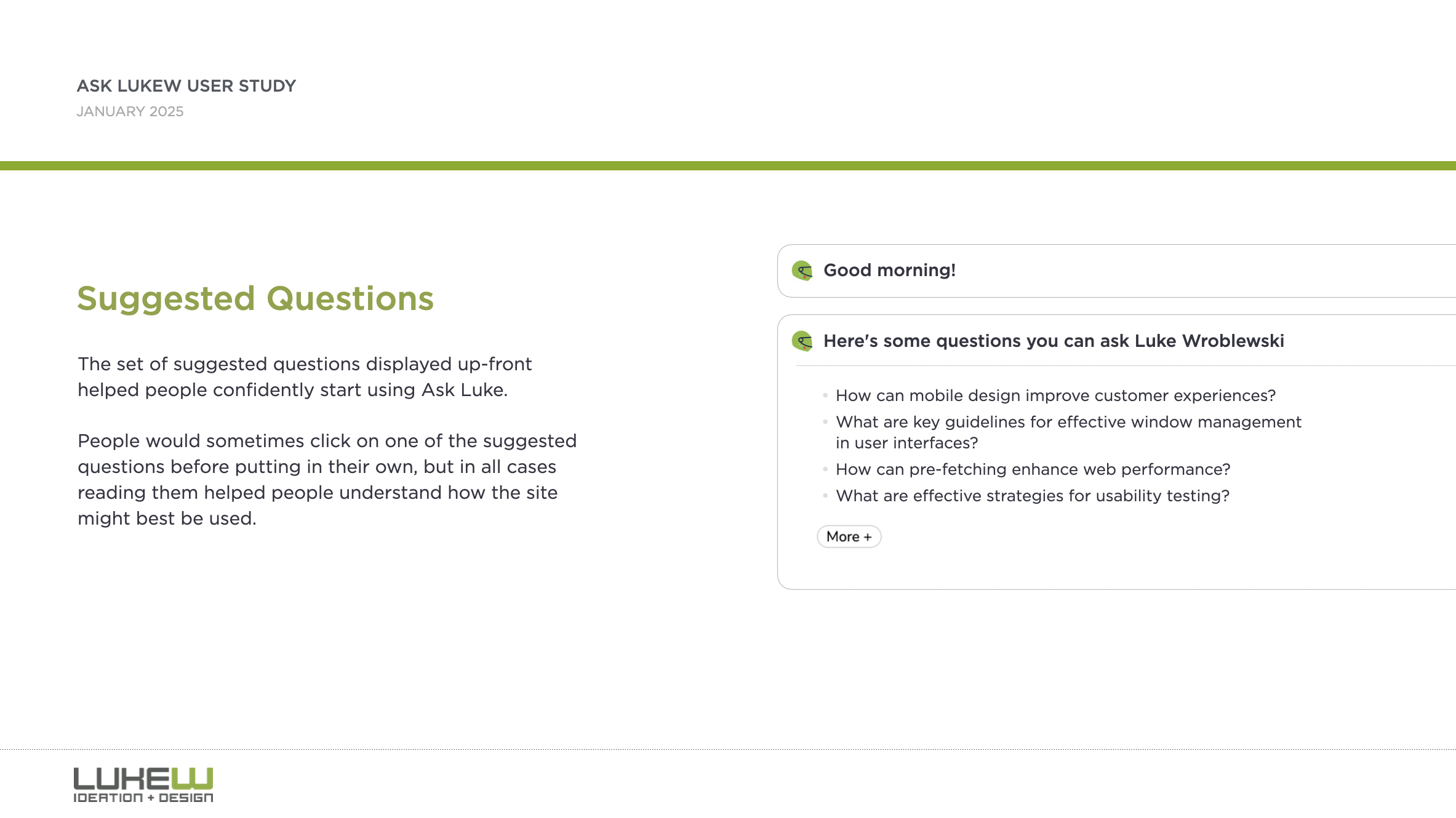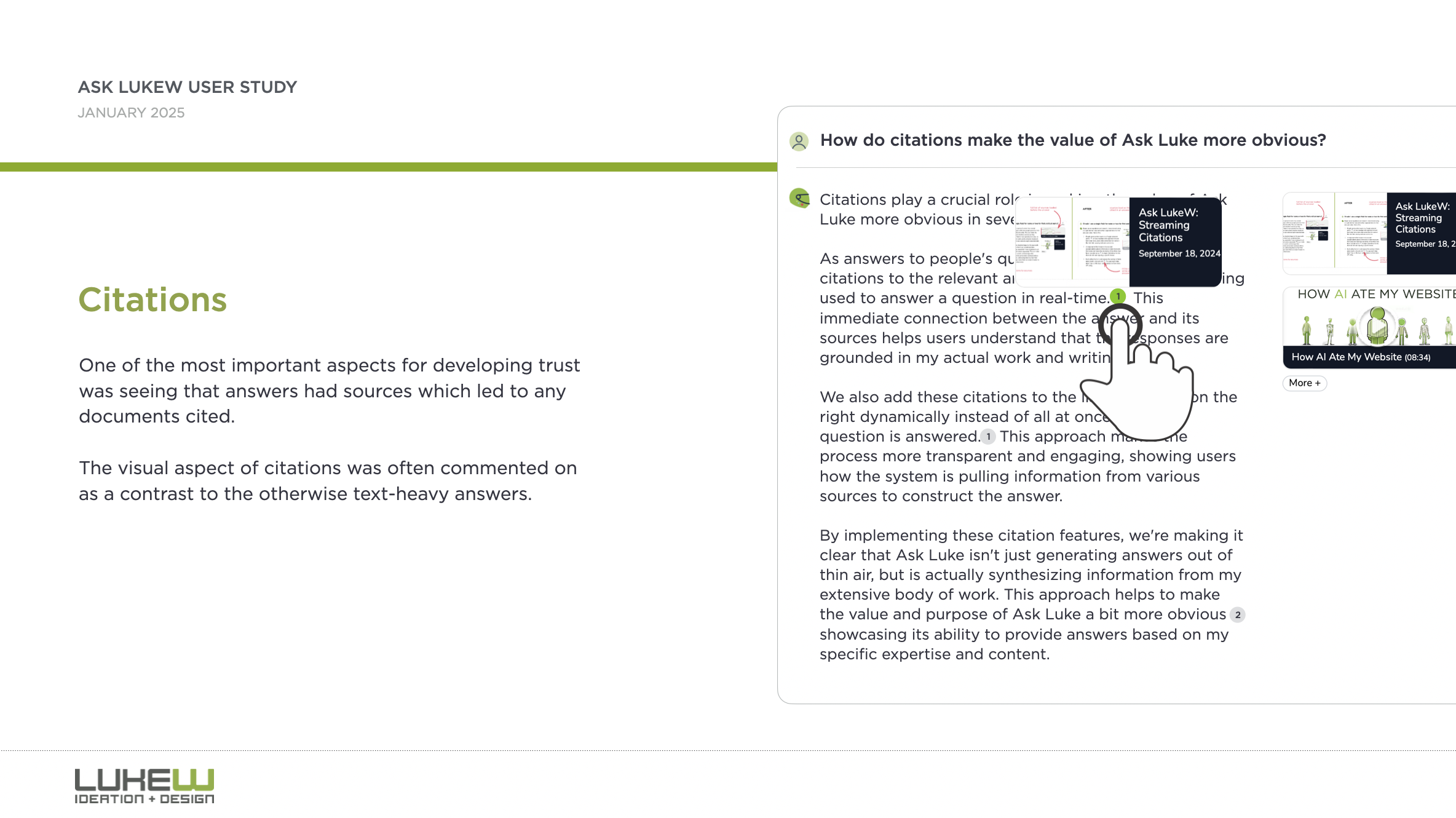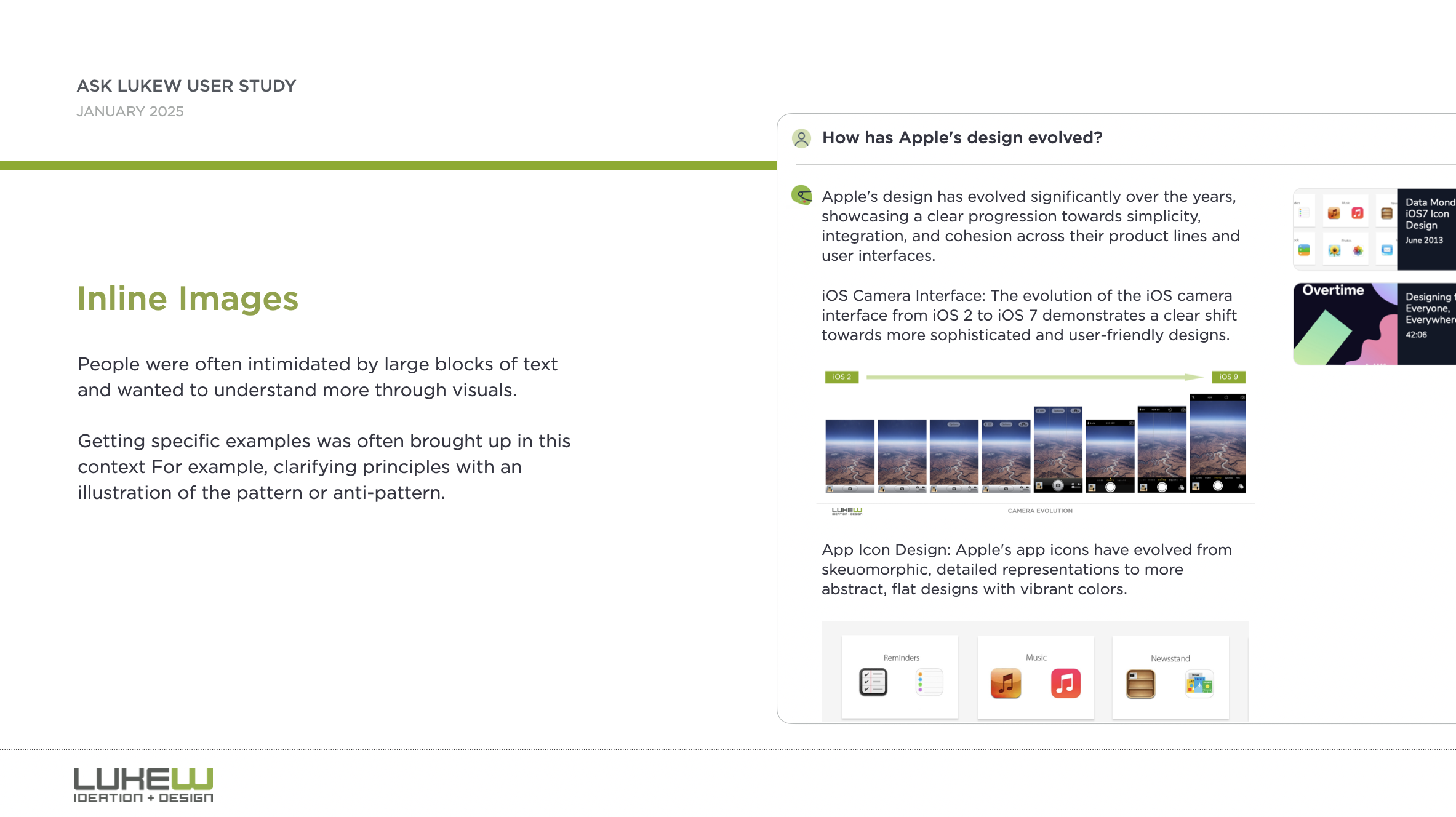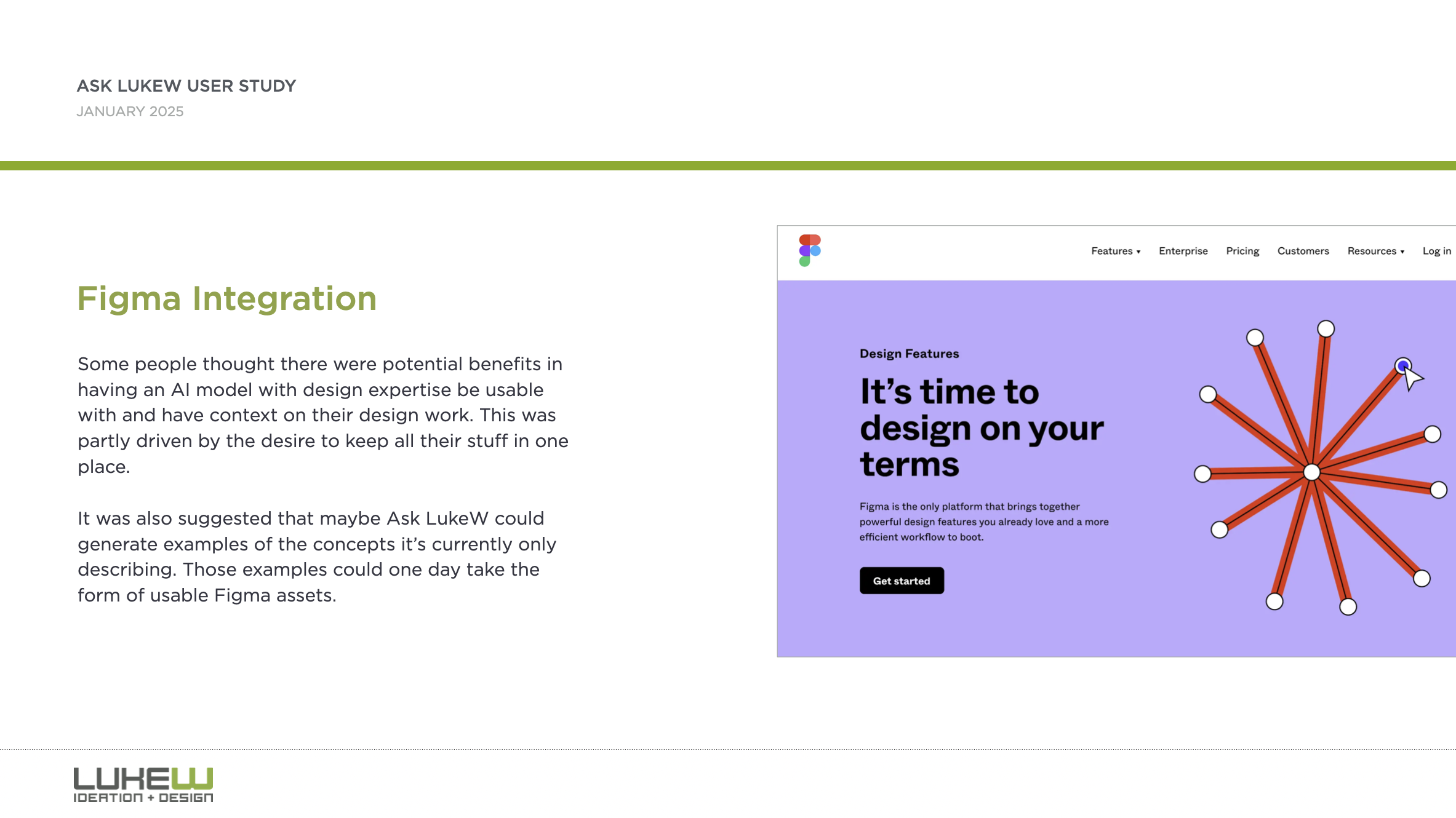To learn what's working and help prioritize what's next, we ran a usability study on the AI-powered Ask LukeW feature of this Web site. While some of the results are specific to this implementation, most are applicable to conversational AI design in general. So I'm sharing the full results of what we learned here.
We ran the Ask LukeW usability study in January 2025 (PDF download) with people doing design work professionally. Participants were asked about their current design experience and then asked to explore the Ask LukeW website, provide their first impressions, and assess whether the site could be useful for them.
Much to my disappointment (I must be getting old), none of the participants were familiar with me so they first tried to understand who I was and whether an interfacing for asking me questions could be trusted. By the end, though, people typically got through this initial hesitation.
Suggested questions and citations played a big role in this transition. People would sometimes click on one of the suggested questions before putting in their own, but in all cases reading suggested questions helped people understand how the site might best be used. After getting a response, one of the most important aspects for developing trust was seeing that answers had sources which led to any documents cited in the response.
The visual aspect of citations was often commented on as a contrast to the otherwise text-heavy answers. People were often intimidated by large blocks of text and wanted to understand more through visuals. Getting specific examples was often brought up in this context. For example, clarifying design principles with an illustration of the pattern or anti-pattern.
"I feel like I'm just a pretty visual person. I know, like, a lot of the designers I work with are also, like, very visual people. And it might just be, like, a bias against blocks of text."
Some people ran into older content and had a fear that they were getting something that may be out of date. The older the content was, the more they had to think about whether it might still be information they could trust.
Some thought there were potential benefits in having an AI model with design expertise be usable with and have context on their design work. This was partly driven by the desire to keep all their stuff in one place.
While a Figma integration is not in the cards for Ask LukeW now, making improvements to retrieval to address perceptions of older content and displaying more inline media (like images) to better illustrate responses is now.
Thanks to Max Roytman for planing and running this study. You can grab the full results as PDF download if interested in learning more.
Further Reading
Additional articles about what I've tried and learned by rethinking the design and development of my Website using large-scale AI models.
- New Ways into Web Content: rethinking how to design software with AI
- Integrated Audio Experiences & Memory: enabling specific content experiences
- Expanding Conversational User Interfaces: extending chat user interfaces
- Integrated Video Experiences: adding video experiences to conversational UI
- Integrated PDF Experiences: unique considerations when adding PDF experiences
- Dynamic Preview Cards: improving how generated answers are shared
- Text Generation Differences: testing the impact of AI new models
- PDF Parsing with Vision Models: using AI vision models to extract PDF contents
- Streaming Citations: citing relevant articles, videos, PDFs, etc. in real-time
- Streaming Inline Images: indexing & displaying relevant images in answers
- Custom Re-ranker: improving content retrieval to answer more questions
- Usability Study: testing a conversational AI interface with designers




